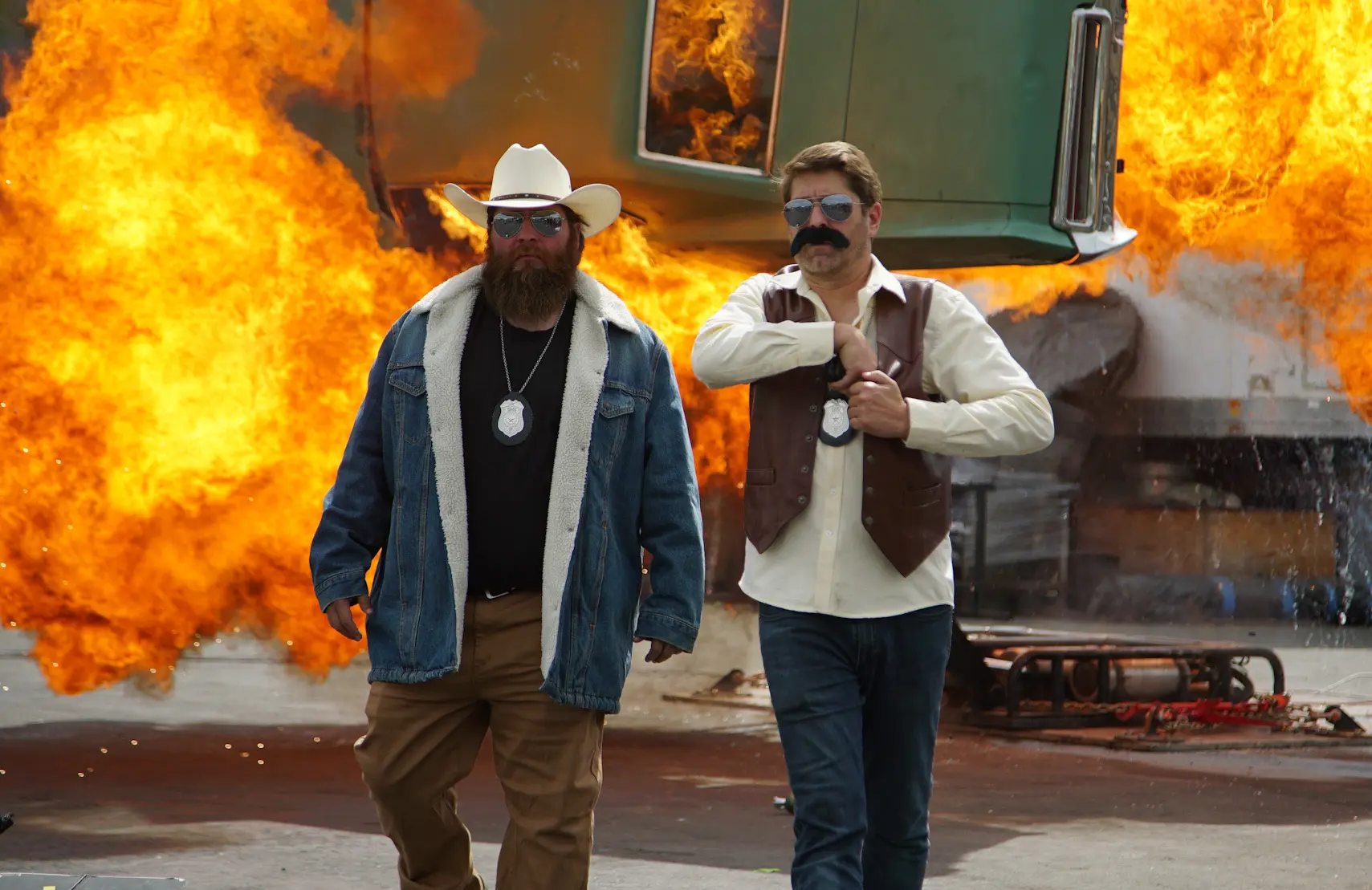Science Channel’s The Explosions Show Is a Blast ... No, Really, It Is
-
 Tommy Passemante and Tory Belleci in a promotional shot for The Explosions Show. They keep their distance from blasts on the actual show.
Tommy Passemante and Tory Belleci in a promotional shot for The Explosions Show. They keep their distance from blasts on the actual show.“It’s like a really, really dangerous video game,” the munitions guy at a Utah dolemite quarry says. He’s describing what it’s like to plug 60,000 pounds of “anfo” — that would be ammonium nitrate mixed with fuel oil — into the ground and then light it. Dynamite is his name, and dolemite is his game.
Science Channel’s The Explosions Show, premiering New Year’s Day, is like Mythbusters but without all those boring myths and all that tedious busting. Ex-Mythbuster Tory Belleci and his cohost, Tommy Passemante, have come to this mountain of rock outside Salt Lake City to whoop and holler while experts in detonation reduce it to several trainloads’ worth of future building material.
What surprised me watching The Explosions Show was how much I enjoyed it. I don’t know if you remember 9/11, I mean really remember 9/11, but I was one of those viewers who was begging the networks to please stop showing the video of planes fireballing into the Twin Towers. Turns out we were just getting started. Explosions caught on camera became a visual shorthand for both terrorism and the war on terror, and not just from news outlets but jihadists who used suicide-bomb videos to attract new martyrs.
Funny thing, though: After a while the explosions stopped being so terrifying. (As a runner, I still can’t watch the Boston Marathon bombing footage.) While college students demand protection from “triggers” — and display their ignorance of the First Amendment — it’s interesting what no longer triggers, including videos of violent detonations, the kind that can be faithfully simulated on an Xbox console.
The Explosions Show is a reminder, too, that explosions are many times more likely to be used to benefit humans than to annihilate humans. Don’t tell David Muir, though. Where would the nightly news be without caught-on-camera explosion porn?
But I get it — the brain inordinately dwells on the bad things that could happen. There’s a reason Americans bought millions of Worst-Case Scenario Handbooks, and it wasn’t to learn what to do in the event our parachute malfunctioned. Likewise, most of this episode of The Explosions Show was devoted to the terrible things that might happen if a bomb went off in your immediate vicinity and how you could improve your outcomes — provided you weren’t frozen stiff by the sight of your impending doom.
Anyway, there are people employed by universities who study such things, and Belleci and Passemante went to a test range in remote New Mexico (always New Mexico) to meet them. The scientists gave them some “experiments” to do, in the form of competitions between Tory and Tommy. Each cohost was given a life-sized wooden dummy with his face on it and told to place it strategically in a model cityscape. A bomb set off here will ricochet off buildings, creating tornado-like swirls and violent pulsations that can blow out eardrums and shatter bones. The winner is the one whose mannequin is damaged the least, as measured by sensors on its neck.
Needless to say, the worse these guys do, the better it is for the show. In one experiment, Tommy’s unfortunate double is buried under so much rubble that it takes a while to dig out. This prompts a round of hilarity at Tommy’s expense.
In another challenge, the professors have the guys put their dummies somewhere in a room where a letter bomb will be set off. Their challenge is to minimize the damage generated from an explosive that is the size and thickness of a supermarket coupon. (Am I concerned that the “bad guys” will pick up ideas from the Science Channel? I am not. As the show points out, anfo has been heavily regulated since the Oklahoma City bombing, and as for letter bombs, there simply aren’t enough devoted weirdos like the Unabomber out there to justify gutting the First Amendment.)
There’s maybe two minutes of actual science in the whole hour, helpfully (if uselessly) explaining why huddling against a wall to shield yourself from flying debris may not be the best idea. Like the blowups on its mythbusting progenitor, The Explosions Show is not fundamentally educational in nature, it’s guiltless voyeuristic entertainment. Replaying dramatic blast video from a dozen different angles is not for the easily triggered, but those people are watching HGTV anyway.
It’s not like the information on The Explosions Show is ever going to come in handy. But I was reminded how lucky I am to live in a land where people blow things up for fun and put it on the Science Channel. As we begin what some are predicting will be a horrible, terrible, no-good year, that’s useful perspective.
The Explosions Show premieres January 1, 2020 at 10:00 PM ET on Science Channel.
Aaron Barnhart has written about television since 1994, including 15 years as TV critic for the Kansas City Star.
TOPICS: The Explosions Show, Science Channel, Tory Belleci